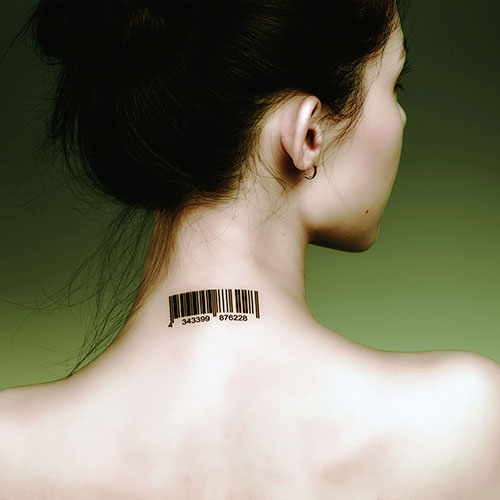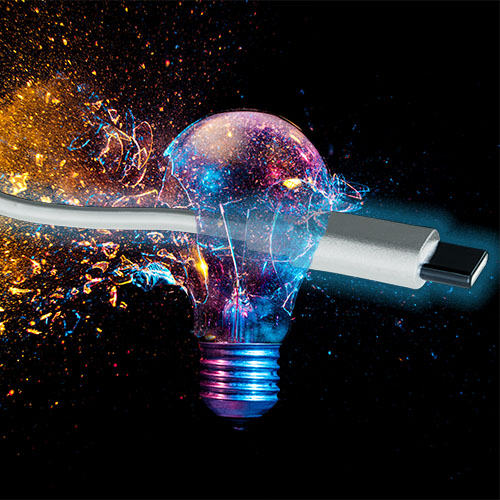Internet addiction is a real thing, and it’s only getting worse. The question now is, what are we going to do about it?
Try it. You’ll like it. …
There was a long chunk of time in the late 1800s where it was perfectly acceptable in polite society to do as much cocaine as you could handle. Thomas Edison, Ulysses S. Grant, Sigmund Freud, and William Halsted, the father of modern medicine, all sang the praises of cocaine in the heady early days after its discovery. Back then, mass-market brands sold wine fortified with cocaine, cocaine tea, even cocaine-laced margarine. Rich capitalists consumed it for pleasure, then handed it out to their employees to increase production.
Since nobody had any idea how cocaine toxicity works, and barely any conception of addiction other than as a spiritual failure, no one thought this could possibly be a bad thing until habitual users like Halsted and Freud started developing debilitating addictions, by which time cocaine abuse was epidemic within poor American communities. When Congress passed America’s first drug laws in 1914, cocaine had done enough damage that its effects are still being felt a century later.
Since the mid-1990s, we’ve been acting just like those naive Belle Epoque cokeheads with another enthralling miracle: the internet. We’ve been gorging on it, seeking out even more places–phones, cars, kitchen appliances–where we can cram it in, like the crazed addicts we are, refusing to believe that a tomorrow will ever come.
Only it’s becoming hard not to notice dawn starting to rise on our digital binge. Looking up from our phones, we’re realizing we’re more strung out than we’d like to admit. Internet addiction has made it into the Diagnostic and Statistical Manual of Mental Disorders, the bible of mental illness, and digital rehab clinics are popping up around the country. Like those Americans a hundred years ago, we are waking up to the fact that this problem isn’t going to simply fix itself, and are finally taking steps to address it.
But it’s worth noting that as bad as America’s first cocaine epidemic was, it doesn’t compare to how bad things got on the other end of the twentieth century, when crack unleashed in America’s cities an unstoppable tsunami of desperate addiction and militarized violence that no one was prepared for. So what’s going to happen when somebody eventually invents something that makes our current internet binge seem tame by comparison– something capable of causing major mental, Internet addiction is a real thing, and it’s only getting worse. The question now is, what are we going to do about it? DIGITAL CRACK emotional, financial, or even physical damage to millions of people at a time?
What’s going to happen when someone figures out how to make digital crack?
I spent the fall of 2017 completely engrossed in the dumbest videogame I’ve ever played. AdVenture Capitalist has only the barest minimum of story line and mechanics to qualify as a game. Graphically, there’s not much more than a bunch of rapidly moving progress bars, and there’s zero attempt at emotional connection. The point of the game is to earn virtual money by buying and operating virtual businesses, all of which you do by pressing a few buttons. Then you spend your loot via buttons that push themselves, and from there all you have to do is enjoy the feeling of watching your dollars multiply from mere billions and trillions to ridiculous, cosmological denominations such as novemdecillions and vigintillions.
It may seem unsophisticated and straightup stupid, but AdVenture Capitalist is incredibly well-designed for what it’s meant to do, which is to create and then satisfy a compulsion to make “money,” and then use your undivided attention to sell you ads. It’s not fun, but it’s still pleasurable: the joy of smoothly functioning routine, the warm fuzzy feeling of acquisition.
I was in desperate need of a habit like that. I was in the midst of a brutal divorce, alone and isolated and suddenly without my usual coping mechanisms, since I’d just made the decision to get sober after admitting that my relationships with booze, benzos, and coke weren’t as healthy as I’d insisted. AdCap, as it calls itself, wasn’t as good as Xanax, but it was better than nothing. I’d check in on my mounting digital wealth a few times an hour, in between Netflix binges and compulsive Tinderswiping.
Since the early days of the drug revolution, sci-fi writers and futurists have predicted that technology would one day give us the kind of altered states of consciousness that until now we’ve relied on chemicals to produce. In the sixties, Philip K. Dick imagined a future where tabletop “mood organs” would let us dial-in our desired emotional states with an accuracy that psychopharmaceuticals could only wish for. And as soon as virtual reality had taken its first baby steps, technoutopians began promising that computergenerated trips as potent as chemically generated ones were just around the corner.
I existed in a blue-lit cocoon of digital indulgence, still spending my days jabbing at my brain’s pleasure centers with whatever was within reach, still every bit the addict, just with a new habit.
Tech-based drugs were supposed to be some kind of miracle–a quintessentially American dream of altered consciousness without the risks or worldly impurity of physical substances. So far they’ve been a disappointment. Decades after we were promised virtual acid trips, the closest thing we have is the VR experience recently unveiled at the Tribeca Film Festival that attempts to give you the sensation of an ayahuasca trip by dropping you inside what looks like Tool album art reimagined as a 3-D animated screensaver. If you Google “digital drugs,” you’ll mostly see articles related to “binaural beats,” which are audio files that supposedly get you high purely through sound, yet are considerably less effective than spinning around fast three or four times.
The high that our smartphones, videogames, and constant internet connections give us isn’t, on its surface, very powerful, or very good. Picking up your smartphone isn’t like doing a line of coke, but it’s effective at what it does. The steady cycle of anticipation and reward, serotonin and dopamine, punctuated periodically by a surge of adrenaline whenever you beat a tricky level, win an auction, or read a tweet that you either strongly agree with or strongly disagree with, can numb you to pretty much anything happening beyond your phone’s bezel that you wish wasn’t happening, whether it’s a boring wait in line at the bank or the crushing feeling of existential failure. (The rise of both incel hikikomori shut-ins and videogame addiction seem to be two sides of the same coin.)
That buzz is only going to get stronger, if not necessarily better. It’s a law of human nature that once we find something that gets us high, sooner or later someone will figure out how to make it more powerful, more habit-forming, and almost invariably more toxic. It was dark ingenuity that drove us to discover how to distill spirits from wine and transform Sudafed into methamphetamine. It’s the reason why so many people are quitting weed these days because they can’t handle how high it gets them, and why you can’t buy any pills or powders now without worrying about them being laced with fentanyl. We will always push things as far as they will go, and then invent new ways to push them even farther.
There is no reason to assume that technology will be any different. At some point, probably in the near future, someone will invent some sort of killer app that will make the weak, jaggy buzz of our current state of digital addiction seem like allergy medicine compared to crystal meth.
When we think about digital addiction, we usually think about family members who can’t stay off Facebook or how hard it is to put Instagram down once you start scrolling. But we’re still in the Stone Age as far as what we can do with engineering digital highs and habits. There’s an entire field of study devoted to designing compulsive behavior so new and fastmoving that its definitive text, Nir Eyal’s Hooked: How to Build Habit-Forming Products, published in 2014, is already starting to feel out-of-date. (Eyal’s new book, Indistractable: How to Control Your Attention and Choose Your Life, is about how to resist the techniques he helped popularize.)
We’ve already discovered myriad ways to get people hooked on virtual things. Multiplayer videogames offer immersive hi-def escapism. Social media lets us mainline two of the strongest motivators of human behavior: social approval and envy. Candy Crush and Fruit Ninja give us little more than bright colors and mindless swiping and are almost disturbingly hard to put down, while Tinder and Grindr take bright colors and mindless swiping and add the very real chance of getting laid. These are all things that make digital life so miraculous, so captivating, even when it’s not being engineered to exploit our habitforming tendencies. It’s exciting and colorful entertainment, available at the push of a button. It’s the feeling that we can connect to anyone in the world from anywhere in the world. It’s an endless source of stimulation that we’re invited to indulge in as much as we can handle, and then some.
But we’re learning–and app designers are also learning–that those miraculous little feelings aren’t necessary. The trend in manufactured addiction right now is for minimalist, brutally efficient products that deliver the pleasure jolt from habitual behavior, but with a bare minimum of moving parts. TikTok has streamlined the entire concept of entertainment down to a firehose of context-free audiovisual stimulation straight to the neocortex that barely acknowledges concepts like character or narrative, but is terrifyingly easy to find yourself watching for the length of an episode of prestige television.
AdVenture Capitalist is only one of a growing field of “idle games” that not only barely hide their goal of dominating your attention in order to serve you ads, but weave jokes about it into their rudimentary gameplay. You don’t need anything sophisticated or particularly exciting from a technical standpoint–like VR or brainstimulating implants or anything else that could have sprung from a Y2K-era cyberpunk novel–when the mere promise of upgrading to a virtual pizza-delivery business is enough to keep you plugged in for hours at a time.
There are plenty of ways that our digital addiction could easily get a lot more harmful than just wasting our time and attention. If you look at the widespread decriminalization of gambling that’s sweeping the country, then look at tech’s current obsession with “micropayments” designed to reduce digital spending to an almost subconscious level, then spend an entire train ride next to someone compulsively slashing through Fruit Ninja, you might start to imagine what could happen if these things ever collided. (And with mobile sports-betting giving a multibillion-dollar boost to already booming revenues, the gambling industry’s sure to push even farther into digital.)
Tech will get more addictive even without doomsday-ish scenarios like hooking Candy Crush up to your bank account. The field of addictive design is built largely on research intended to help us battle our susceptibility to addiction, but as our understanding of addiction broadens, it only teaches us more ways of exploiting it. If we want to see what a truly addictive piece of technology looks like, we only have to let the market keep doing its thing.
No one needs to set out to invent a new kind of digital addiction capable of ruining the lives of millions in order for it to come into being. Putting something online often has unforeseeable, secondary effects, especially if it’s designed for sustained, intensive user engagement. Facebook wasn’t specifically designed to burn down Western democracy, but that doesn’t change how effective it’s been at doing just that. Digital crack could very well come in the form of something genuinely beneficial to most of the people who use it, but liferuiningly bad for a few.
Which is how a lot of the technology we use already works. Some people really do develop eating disorders from social media. Some people really do lose relationships, jobs, and money to their videogame habits. They’re still so few that they’re easy to ignore, but that’s certain to change.
Our phones and laptops and videogame consoles didn’t entwine themselves so deeply into our lives just because they’re convenient or fun. There’s something inherently addictive about interfacing with them, tapping at them and filling our senses with them and letting them take us out of our bodies and transport us into a blue-lit nowhere. Getting out of there and back into the real world can be hard sometimes. And it’s sure to get harder.
Miles Raymer is a writer living in New York.























